The Middle Devonian
The Middle Devonian Epoch: 398 to 385 million years ago
"Silurian-Devonian marine biogeography is dominated through the Eifelian by a global subdivision into a widespread cool to cold climate realm that contrasts with warm conditions elsewhere. Following the Eifelian the global climatic gradient decreased markedly, resulting in the elimination of the cool to cold realm. Laurentian marine faunas display a marked level of endemism through the Givetian, following which there is an overall cosmopolitanism."
Silurian-Devonian Biogeography - A.J. Boucot & Robert B. Blodgett - The Fourth, Millennium, International Brachiopod Congress
Middle Devonian Sites
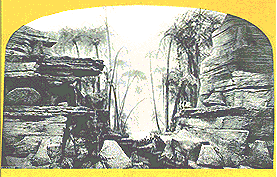 The Middle Devonian is a rather short epoch, and has no really outstanding fossil sites. However, there are a large number of lesser-known sites, particularly in the traditional Old Red Continent. This region is now scattered among a number of continental masses. In the Middle Devonian, one could have included many of the more important Northern Hemisphere sites in a broad strip passing roughly southwest to northeast starting in the state of Ohio, USA, passing through Pennsylvania and New York, through Scotland and along the coast of Northern Europe to the Baltics. Another group of sites would lie in a shorter, almost parallel line to the northwest, from Western Canada, through the Canadian Arctic to Siberia. Chinese and Gondwanan Middle Devonian sites are quite rare. Some, like the Aztec Siltstone in Victorialand, Antarctica, may be quite rich, but are poorly known.
The Middle Devonian is a rather short epoch, and has no really outstanding fossil sites. However, there are a large number of lesser-known sites, particularly in the traditional Old Red Continent. This region is now scattered among a number of continental masses. In the Middle Devonian, one could have included many of the more important Northern Hemisphere sites in a broad strip passing roughly southwest to northeast starting in the state of Ohio, USA, passing through Pennsylvania and New York, through Scotland and along the coast of Northern Europe to the Baltics. Another group of sites would lie in a shorter, almost parallel line to the northwest, from Western Canada, through the Canadian Arctic to Siberia. Chinese and Gondwanan Middle Devonian sites are quite rare. Some, like the Aztec Siltstone in Victorialand, Antarctica, may be quite rich, but are poorly known.
North America: In Middle Devonian times, the interior of the North American craton was covered by shallow seas on an irregular basis. The ebb and flow of the seas may have been relatively quick, and large bone beds of fish stranded in drying lowland areas are found in the Columbusand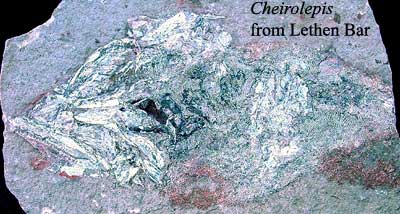 Delaware Limestones of Ohio, along with other, more conventional exposures. To the east (the paleo-southeast) vast reefs were buried as Avalonia closed in and merged with North America. These left many fossils in the states of West Virginia (e.g. the Mahantango Formation) and points north. The two fossiliferous zones intersect in Pennsylvania and New York which have, in fact, the best, or at least best known, Middle Devonian exposures in the world. These regions include several spots on the south shore of Lake Erie, the Onondaga Limestone, the Hamilton Group in upper New York State, and various other sites in New York. One of the most unique sites of Middle Devonian age is the "Gilboa Forest" in Gilboa, New York. This is possibly the oldest known forest anywhere. It consists -- not even of Archaeopteris -- but of giant progymnosperm ferns.
Delaware Limestones of Ohio, along with other, more conventional exposures. To the east (the paleo-southeast) vast reefs were buried as Avalonia closed in and merged with North America. These left many fossils in the states of West Virginia (e.g. the Mahantango Formation) and points north. The two fossiliferous zones intersect in Pennsylvania and New York which have, in fact, the best, or at least best known, Middle Devonian exposures in the world. These regions include several spots on the south shore of Lake Erie, the Onondaga Limestone, the Hamilton Group in upper New York State, and various other sites in New York. One of the most unique sites of Middle Devonian age is the "Gilboa Forest" in Gilboa, New York. This is possibly the oldest known forest anywhere. It consists -- not even of Archaeopteris -- but of giant progymnosperm ferns.
Far off in the Canadian Arctic are probably measureless Middle Devonian treasures to be found, but the region is poorly explored, from a paleontological point of view. See Marss et al. 2002) for an example of what may be there to find.
Europe: The best known Middle Devonian site of all is probably Lethen Bar in Scotland, in the heart of the Old Red Continent, 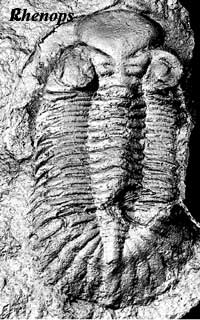 which has been known since the time of Agassiz in the 1840's. This site has yielded numerous vertebrate fossils, particularly placoderms and early osteichthyans, such as the Cheirolepis shown here. It is one of a number of Scottish sites known only from the now-abandoned sandstone quarries which led to the discovery of the Old Red Continent. Lethen Bar was part of the Orcadian Basin, a huge lake and/or bay which occupied much of northern Britain in the Middle Devonian.
which has been known since the time of Agassiz in the 1840's. This site has yielded numerous vertebrate fossils, particularly placoderms and early osteichthyans, such as the Cheirolepis shown here. It is one of a number of Scottish sites known only from the now-abandoned sandstone quarries which led to the discovery of the Old Red Continent. Lethen Bar was part of the Orcadian Basin, a huge lake and/or bay which occupied much of northern Britain in the Middle Devonian.
The fishing continues to be good across parts of central Germany and France. This area includes what was, at the time, both the southern margin of Europe (actually, Baltica) and the various bits and pieces of the microcontinent of Armorica which were suturing to the main landmass of Baltica. These are reef and marine exposures, rich in trilobites, echinoderms, and other invertebrates. For vertebrates, we go to the Holy Cross Mountains of Poland and to the Baltics. These were the northwestern extremes of Baltica, home to a number of less common Middle Devonian fishes, such as the psammosteids described by Tarlo (1964). Further east (or paleo-north), there are a few sites known for other heterostracans and for thelodonts. However, most of this fauna belongs to the Early Devonian.
Gondwana: Of all the Gondwanan continents, we are not able to say much. The Xichong Formation of Yunnan Province and the Do Son Formation of Vietnam both have Middle Devonian fossils, but the sites are either poorly known or poorly developed. In any event we have little information. Australia, which is well-supplied with Early and Late Devonian sites, has rather little in the way of Middle Devonian exposures. The Bunga Beds and Mulga Downs localities in New South Wales are exceptions. The Aztec Siltstone of Antarctica has been fruitful yielding, in particular, placoderms and sharks. However, the dating is not well constrained and it is, obviously, not the easiest place to explore. The Atlas Mountains of Morocco are the source of many commercially available trilobite fossils, although political disturbances, as well as climate, have also made this region periodically difficult to access in recent years.
One new Gondwanan site with considerable promise is the Canõ del Oeste Formation, which lies on the border between Venezuela and Columbia in the Perijá Mountains. In recent years, this has yielded interesting new terrestrial plant material, as well as near-shore marine invertebrates, such as the Rhenops shown here. See, deCarvalho & Moody (2000). ATW040711.
Life in the Middle Devonian
By the Middle Devonian the armoured jawless ostracoderms were in decline, and instead the jawed fish were undergoing a great evolutionary radiation in both the sea and in freshwater. The warm, shallow, oxygen-depleted waters of Devonian inland lakes, surrounded by early plants, may have provided an environment in which certain fish developed many of the essential features e.g. well developed lungs, ability to crawl out of the water and onto the mud for short periods of time, possibly in search of invertebrate food) which would developed by some of their descendants as tetrapods.
The newly emerging jawed fishes become more diverse and some become dominant predators.
Marginal Marine Bays and Deltas, and Brackish and Freshwater
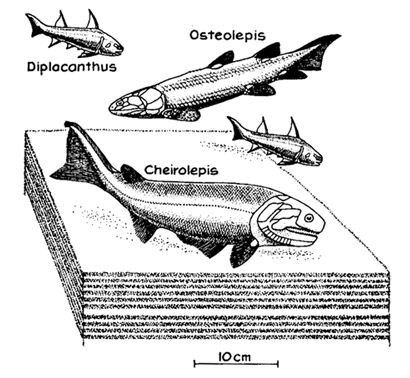
A Middle Devonian lacustrine community in the Orcadian Basin may have included, apart from the showing
acanthodian Diplacanthus), actinopterygian
Cheirolepis), and
crossopterygian Osteolepis) fish shown above,
antiarch and
arthrodire Placoderm and
lungfish. From time to time mortality was locally very high and perhaps because of desiccation, water bloom or other causes. The absence of traces of invertebrate animal life is puzzling
from D. L. Dineley, Aspects of a Stratigraphic System: the Devonian, 1984, MacMillan, p.74
Life on Land - Plants and Arthropods
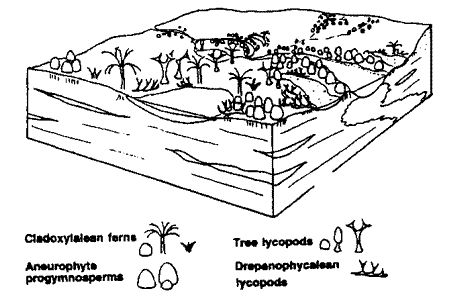
The Middle Devonian was a time of progressive innovation, with lycopsids, sphenopsids (horsetails), early ferns, and a group called the progymnosperms ancestral to higher or seed plants) all appearing. The most readily recognizable plants were the lycopsids with their small leaves spiraling along each stem. One of the most completely preserved was the herbaceous Leclercqia from Middle Devonian sediments. Its branched leaves were five-pointed and bore a ligule (a small scale-like outgrowth), while the xylem resembled that of the primary xylem of the huge Carboniferous tree-lycopsids called Lepidodendron, of which it seemed to be an ancestor. Reproducing by spores, all these plants were confined, to moist, lowland habitats.
Living among these early land plants were a diverse selection of arthropods, including spiders, mites, myriapods and collembolids
 The Middle Devonian is a rather short epoch, and has no really outstanding fossil sites. However, there are a large number of lesser-known sites, particularly in the traditional Old Red Continent. This region is now scattered among a number of continental masses. In the Middle Devonian, one could have included many of the more important Northern Hemisphere sites in a broad strip passing roughly southwest to northeast starting in the state of Ohio, USA, passing through Pennsylvania and New York, through Scotland and along the coast of Northern Europe to the Baltics. Another group of sites would lie in a shorter, almost parallel line to the northwest, from Western Canada, through the Canadian Arctic to Siberia. Chinese and Gondwanan Middle Devonian sites are quite rare. Some, like the Aztec Siltstone in Victorialand, Antarctica, may be quite rich, but are poorly known.
The Middle Devonian is a rather short epoch, and has no really outstanding fossil sites. However, there are a large number of lesser-known sites, particularly in the traditional Old Red Continent. This region is now scattered among a number of continental masses. In the Middle Devonian, one could have included many of the more important Northern Hemisphere sites in a broad strip passing roughly southwest to northeast starting in the state of Ohio, USA, passing through Pennsylvania and New York, through Scotland and along the coast of Northern Europe to the Baltics. Another group of sites would lie in a shorter, almost parallel line to the northwest, from Western Canada, through the Canadian Arctic to Siberia. Chinese and Gondwanan Middle Devonian sites are quite rare. Some, like the Aztec Siltstone in Victorialand, Antarctica, may be quite rich, but are poorly known.


